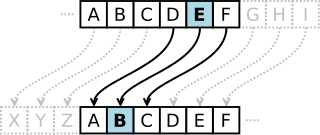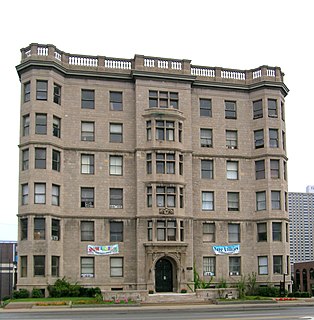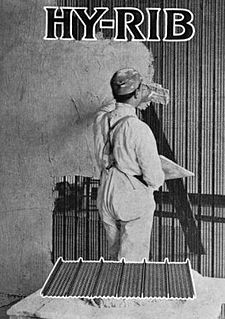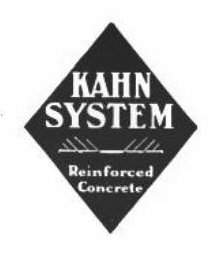
In cryptography, a Caesar cipher, also known as Caesar's cipher, the shift cipher, Caesar's code or Caesar shift, is one of the simplest and most widely known encryption techniques. It is a type of substitution cipher in which each letter in the plaintext is replaced by a letter some fixed number of positions down the alphabet. For example, with a left shift of 3, D would be replaced by A, E would become B, and so on. The method is named after Julius Caesar, who used it in his private correspondence.

Oliver Rolf Kahn is a German former football goalkeeper. He started his career in the Karlsruher SC Junior team in 1975. Twelve years later, Kahn made his debut match in the professional squad. In 1994, he was transferred to Bayern Munich for the fee of DM4.6 million, where he played until the end of his career in 2008. His commanding presence in goal and aggressive style earned him nicknames such as Der Titan from the press and Vol-kahn-o ("volcano") from fans.

Albert Kahn was the foremost American industrial architect of his day. He is sometimes called the "architect of Detroit". In 1943, the Franklin Institute awarded him the Frank P. Brown Medal posthumously. Many of Albert Kahn's personal working papers and construction photographs are housed at the University of Michigan's Bentley Historical Library. His personal working library, the Albert Kahn Library Collection, is housed at Lawrence Technological University in Southfield, MI. The Archives of American Art at the Smithsonian house most of the family's correspondence and other materials.
Kahn is a surname of German origin. Kahn means "small boat", in German. It is also a Germanized form of the Jewish surname Cohen, another variant of which is Cahn.

Florence Prag Kahn was an American teacher and politician who in 1925 became the first Jewish woman to serve in the United States Congress. She was only the fifth woman to serve in Congress, and the second from California, after fellow San Franciscan Mae Nolan. Like Nolan, she took the seat in the House of Representatives left vacant by the death of her husband, Julius Kahn.
Albert Eugene Kahn was an American journalist, photographer, author and nephew of modernist industrial architect Albert Kahn. He is mostly known as author of books Sabotage! The Secret War Against America and The Great Conspiracy: The Secret War Against Soviet Russia which described leading Soviet communists as foreign spies based on their forced confessions at the Moscow Trials. Albert E. Kahn's father, Moritz Kahn, was senior engineer in the firm who set up the Kahn brothers Soviet Union operation in conjunction with Gosproekstroi.

Julius Kahn was a United States Congressman who was succeeded by his wife Florence Prag Kahn after his death. He has been described by the American Jerusalem as "among the most influential Jews in San Francisco—as well as national–civic life, from the middle of the 19th century into the 1930s".

Mill Creek is a neighborhood in the West Philadelphia section of Philadelphia, Pennsylvania. It sits between 44th and 52nd Streets north of Market Street and south of Girard Avenue. It is named for the eponymous creek which was buried in a pipe in the 19th century.

Oheka Castle, also known as the Otto Kahn Estate, is a hotel located on the North Shore of Long Island, in West Hills, New York, a hamlet in the town of Huntington, NY. It was the country home of investment financier and philanthropist Otto Hermann Kahn and his family. The name "Oheka" is an acronym using the first several letters of each part of its creator's name, Otto Hermann Kahn, which Kahn also used to name his yacht Oheka II and his ocean-front Villa Oheka in Palm Beach, Florida. The mansion was built by Kahn between 1914 and 1919, and is the second largest private home in the United States, comprising 127 rooms and over 109,000 square feet (10,100 m2), as originally configured.

Albert Kahn Associates is an architectural design firm in Detroit, Michigan with a second office located in Miami, Florida. It was established in 1895 and is still active. Recent work includes being awarded third place in the Virtual Modeling Stage of NASA’s 3D-Printed Habitat Competition for their work on martian habitats, and also creating the world's largest penguin conservation center, Polk Penguin Conservation Center. In earlier years, it introduced a new technology in industrial building involving a unique reinforced concrete method referred to as the Kahn System of construction using proprietary patented reinforcement steel manufactured by Trussed Concrete Steel Company. The building of automobile factories and other types of factories were revolutionized from wooden timber framing construction. Besides being an advanced technology in strength that led to wider open interior spaces, it featured a high degree of fire resistance and larger window space for light. The firm started by Albert Kahn built factories for Chrysler for over a decade, Ford Automobile for 30 years and Packard Automobile for 35 years. Other important clients of the firm were Republic Steel and General Motors. The firm was awarded a $40 million contract to build a tractor factory in Russia in 1928. The firm's output was over a million dollars worth of work per week by 1929. By 1939, the firm designed 19 percent of all industrial buildings in the United States and had designed some $800 million of buildings worldwide.

The Palms is an apartment building located at 1001 East Jefferson Avenue in Detroit, Michigan. It was one of the first buildings in the United States to use reinforced concrete as one of its major construction materials. It was listed on the National Register of Historic Places in 1985.

The 1908 South Carolina United States House of Representatives elections were held on November 3, 1908, to select seven Representatives for two-year terms from the state of South Carolina. All seven incumbents were re-elected and the composition of the state delegation remained solely Democratic.

The 1906 South Carolina United States House of Representatives elections were held on November 6, 1906, to select seven Representatives for two-year terms from the state of South Carolina. All seven incumbents were re-elected and the composition of the state delegation remained solely Democratic.
The 2002 House elections in Georgia occurred on November 5, 2002 to elect the members of the State of Georgia's delegation to the United States House of Representatives. Georgia has thirteen seats in the House, apportioned according to the 2000 United States Census.
The Battle of Magetobriga was fought in 63 BC between rival tribes in Gaul. The Aedui tribe was defeated and massacred by the combined forces of their hereditary rivals, the Sequani and Arverni tribes. The Sequani and Arverni enlisted the aid of the Germanic Suebi tribe under their king Ariovistus. Following their defeat, the Aedui sent envoys to the Roman Senate, their traditional ally, for aid. The Roman general Julius Caesar would subsequently use their request for aid as a basis for furthering his conquest of Gaul.

Julius Kahn was an engineer, industrialist, and manufacturer. He was the inventor of the Kahn System, a reinforced concrete engineering technique for building construction. The Kahn System that he patented in 1903 was used worldwide for housing, factories, office and industrial buildings. His system was used in 134 US cities by 1939. His engineering system for building construction was also found then in Africa, Europe, Canada, China, Brazil, and Mexico. In Yokohama, Japan, his system was used in an automobile factory. His unique engineering system of construction was used also in airplane plants, warehouses, docks, foundries, creameries, filtration plants, rubber factories, steel plants, silos, distilleries, smelters, and textile mills.

The Trussed Concrete Steel Company was a company founded by Julius Kahn, an engineer and inventor. The company manufactured prefabricated products for reinforced concrete beams and steel forms for building reinforced concrete floors and walls. Kahn invented and patented a unique new technology reinforcement system of construction called the Kahn System that was stronger, more economical, and lighter than the existing old school technology used up to that point to construct buildings. The old method was to use plain straight smooth steel beams or loose rods or stirrups in concrete beams and floors. Kahn's new technology improved system used 45 degree tab flanges or "wings" permanently attached on steel beams that distributed the tension stress for overall improvement in strength of reinforced concrete.

Hy-Rib was a brand name for a product manufactured by the Trussed Concrete Steel Company. It is an engineering reinforcement system for floors, walls, and ceilings of buildings and houses. This product is a derivative of the Kahn Trussed Bar for beams and columns that was invented by Julius Kahn. Kahn engineered the Hy-Rib products and they were first manufactured in 1909.

The Kahn system is an industrial construction technique for reinforcement of buildings that was engineered and patented by Julius Kahn. The Kahn system is an industrial construction design using the Kahn Trussed Bar as the bases. This steel bar was a new type of reinforcing bar used in concrete and had unique engineered features to distribute stress.

Julius Sterling Morton, also known as J. Sterling Morton, is a 1937 bronze sculpture of Julius Sterling Morton by Rudulph Evans, installed in the United States Capitol Visitor Center, in Washington, D.C., as part of the National Statuary Hall Collection. It is one of two statues donated by the state of Nebraska. The sculpture was accepted into the collection by Congressman Karl Stefan of Nebraska on April 27, 1937.














